Some things are so iconic that it’s borderline blasphemous to change them. Things like mama’s potato salad recipe, Led Zeppelin’s “Stairway to Heaven,” and John Moses Browning’s 1911 were all perfect the first time, so tinkering with them can only mess things up, right? That’s the conventional wisdom, at least. By the 1980s, gunsmith Virgil Tripp and engineer Sandy Strayer decided that the beloved 1911 needed a sequel. What followed was the 2011 pistol.
An acceptable cover of “Stairway,” however, has yet to be recorded.
Some call the 2011 pistol progress — an updated handgun for a 9mm age, high capacity age — while others call it a bastard child of a pistol, but which is it? Regardless of your opinion, the 2011 pistol is demanding attention. Hell, even John Wick ditched his custom Glock for a TTI 2011 in the third movie and uses a new TTI Pit Viper 2011 in the new sequel.
2011 Pistol History
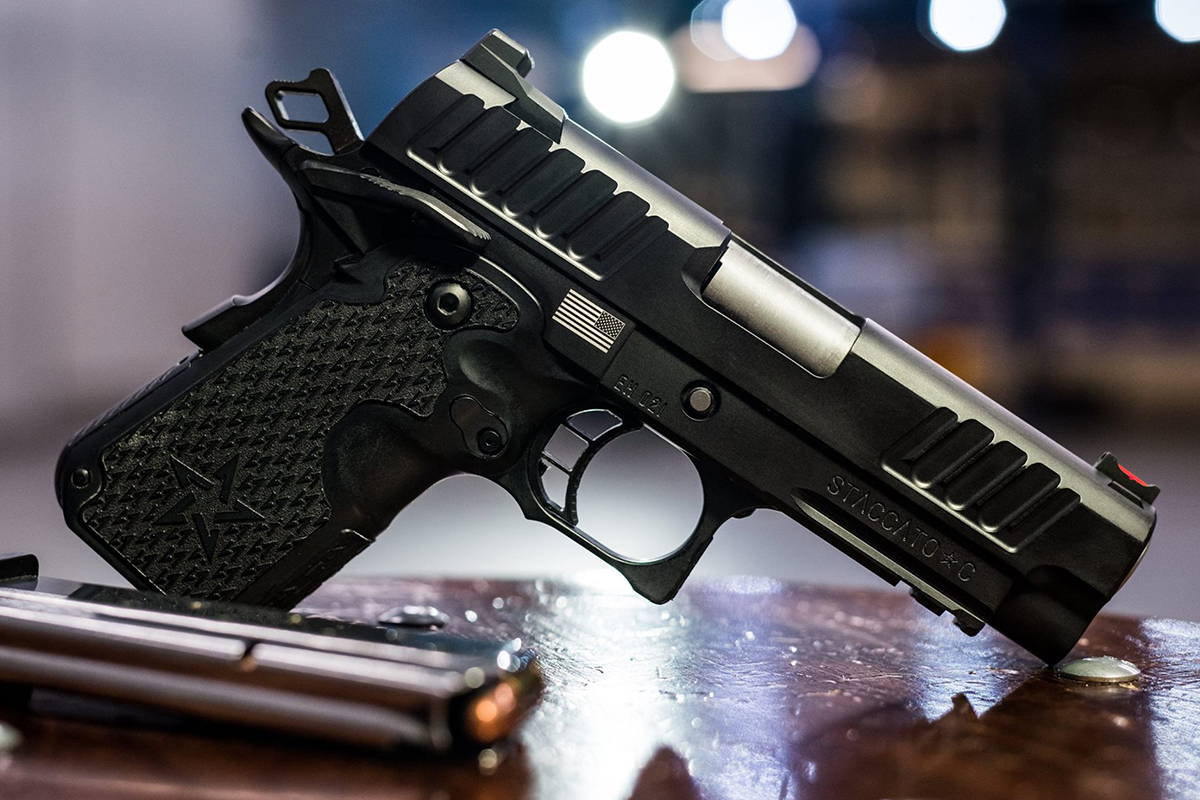
By the 1980s, firearms technology had finally surpassed the original 1911 design. While most manufacturers wanted to move past the gun that had been the U.S. military service pistol since the First World War in favor of higher capacity 9mm pistols like the Beretta 90 Series, Tripp wanted to go another way. He began making custom 1911s in 1982, and in the early 1990s, he recruited Strayer, an engineer, to drag the 1911 into the 21st century with a modular double-stack frame design.
They believed that a few careful changes could create one of the best-performing and most sought-after pistols in the modern market — a gun that combined the tremendous single-action trigger and sleek lines of a 1911 with the capacity and chambering of more modern pistols.
So, they put their heads together, wrote and filed the patent for the 2011 design in 1994, and made the 1911 better than ever. It turns out that chambering a relatively heavy, hand-fit, single-action 1911-style pistol in 9mm with a bull barrel was a recipe for a tack driver.
But the duo didn’t stay together long.
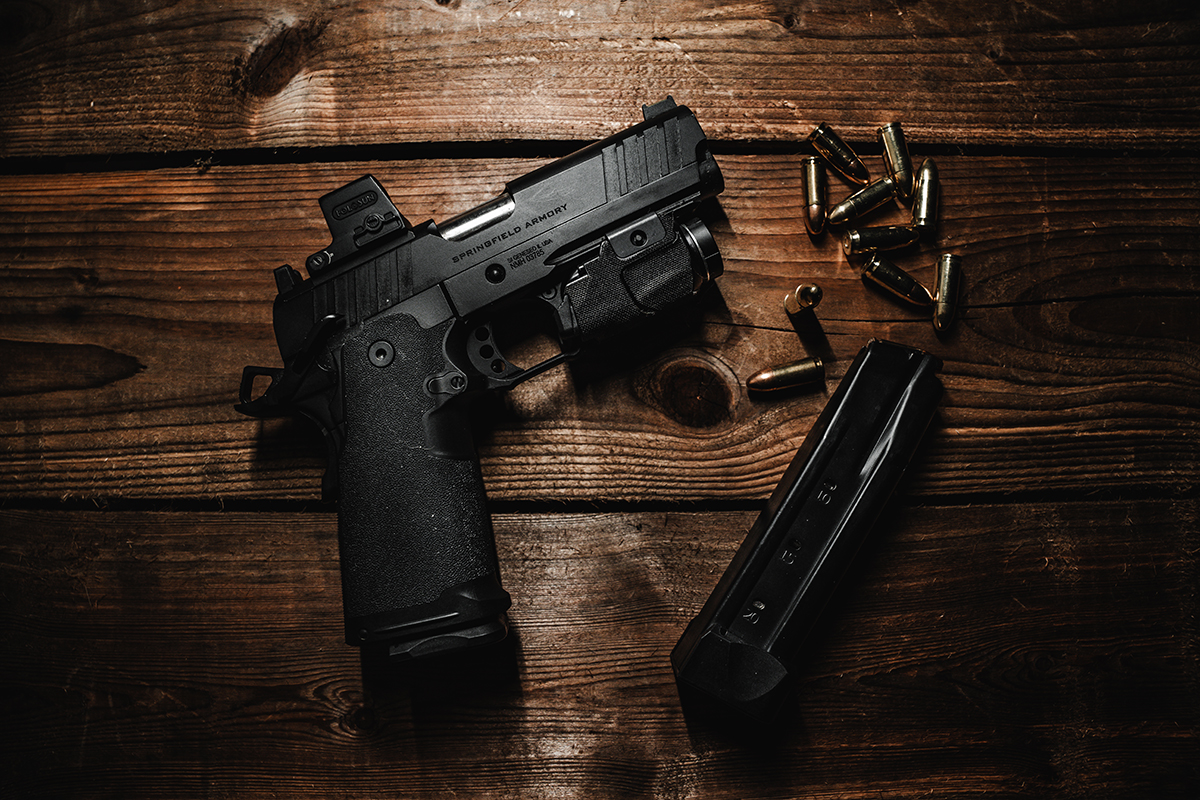
They formed Strayer Tripp International (better known as STI, which has since become Staccato), but Strayer split about a month later to form Strayer-Voight Inc. (SVI) with Michael Voight, a pro shooter, and gunsmith.
After Strayer’s departure, Tripp kept the STI name but changed its meaning to Science, Technology, Ingenuity. Each man owned half the 2011 patent, so they became competitors for a while. Tripp sold STI to Dave Skinner in 1997, and today, the Texas-based Staccato is the most prolific 2011 gunmaker out there.
But something important happened in 2016 that opened up the platform to more shooters than ever: The patent on the 2011 expired, which made it available to anyone who wanted to build and sell it.
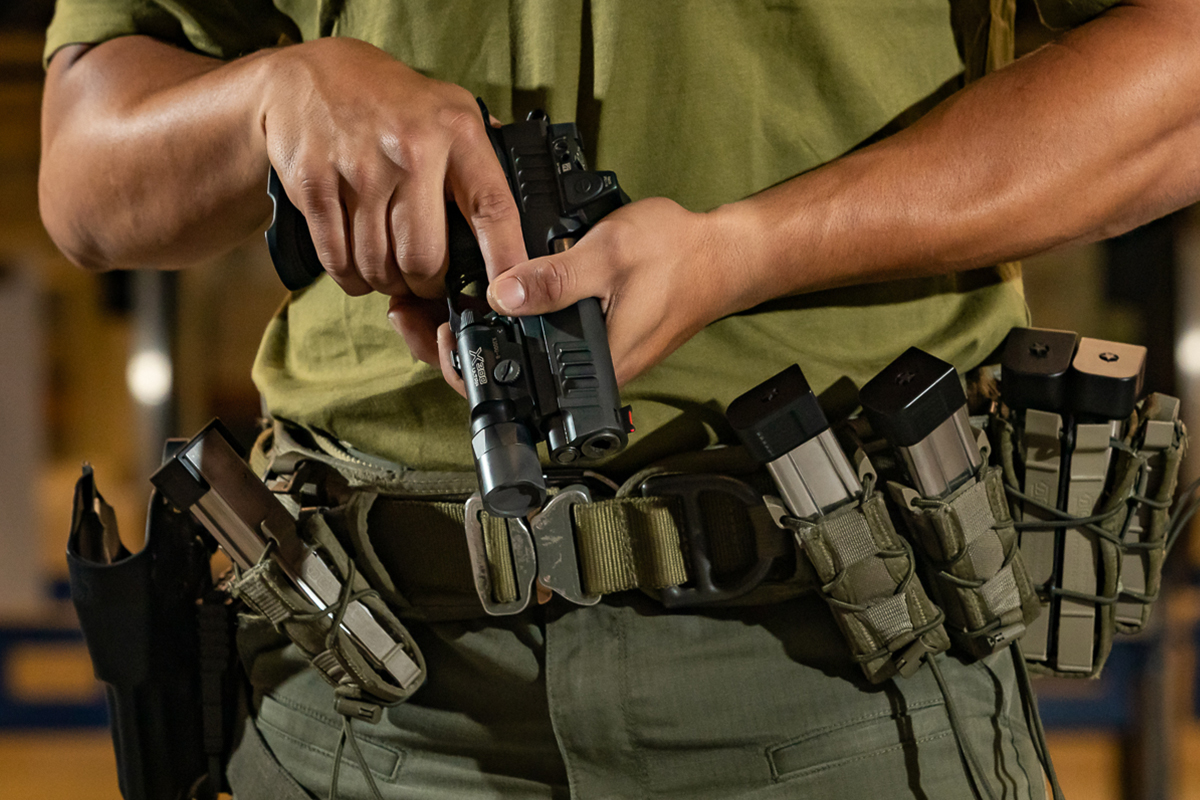
A few other manufacturers have since thrown their hats into the ring to compete with Staccato — such as Atlas Gunworks, Taran Tactical Innovations (TTI), and Cosaint Arms — but these brands focus on more expensive pistols that haven’t achieved the same broad appeal as the Staccato 2011.
GOOD GEAR – Enjoy a Serious Caffeine Punch With the Brcc Ready To Drink 300
What Makes the 2011 Pistol Different From the 1911?
When you glance at a 2011 pistol, it’s hard to see how it differs from the 1911 immediately. After all, the century-old handgun design has been chambered in various calibers, given various magazine capacities, and built out of various materials in the past 110 years. The most important differences between the two are structural.
According to a Staccato representative, a basic 2011 pistol uses a metal subframe and a polymer grip frame. In contrast, the original design has a one-piece metal frame with grip panels attached to it. The difference in build affects how the gun delivers recoil.
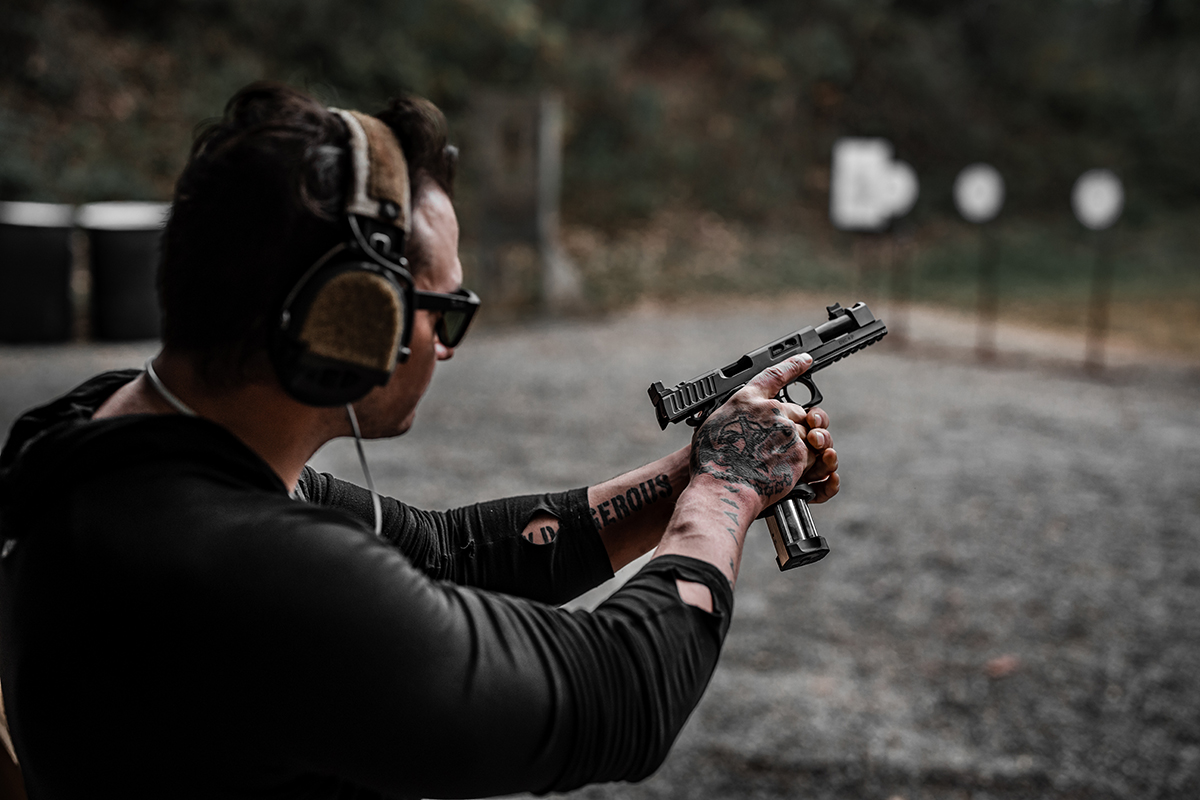
When you shoot a 1911, vibration spreads throughout the frame — like how a crowbar vibrates after striking a metal pipe — from the point of impact on down. The heft of the 2011’s subframe and polymer grip frame absorb and distribute the vibration more evenly.
Additionally, the polymer frame allows you to modify the grip more easily, and the design makes room for a double-stack 9mm magazine without adding excessive width. That means you get a double-stack magazine without it feeling like a fat double-stack grip. (Some compact 2011 models come with a single-stack magazine.)
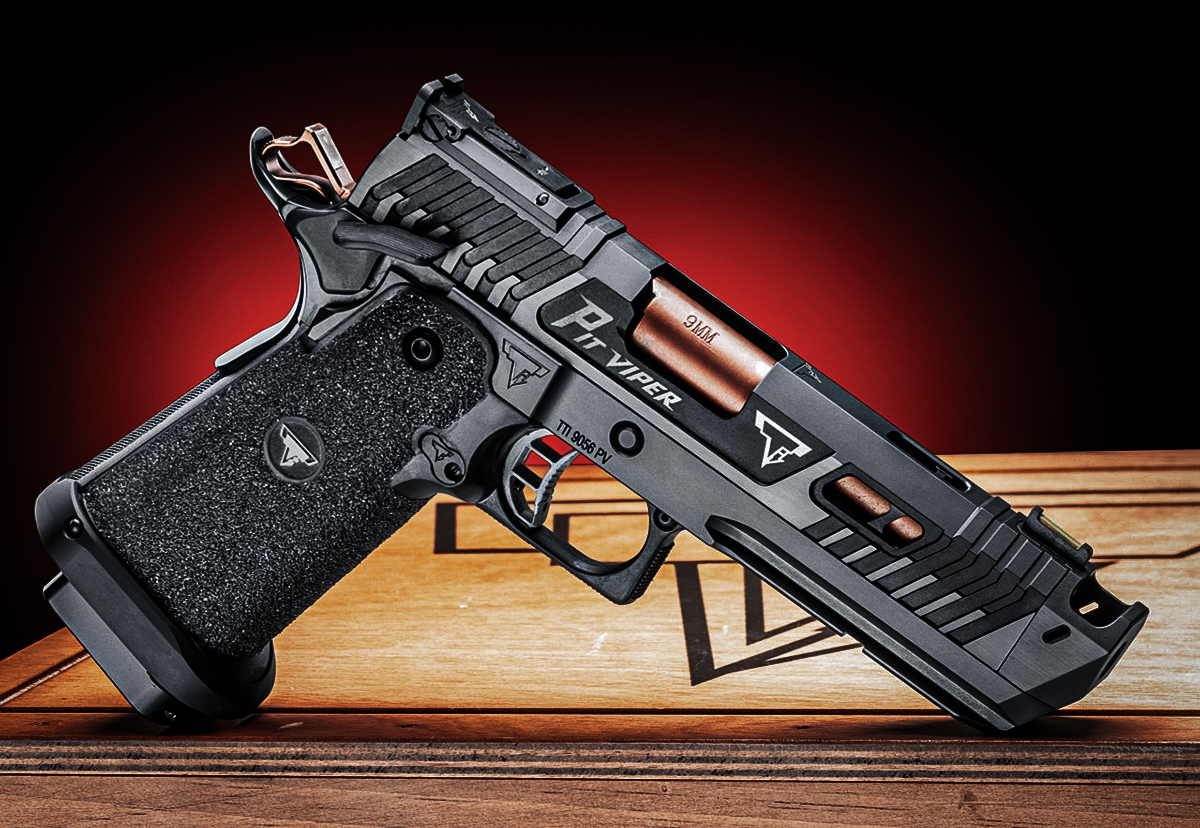
Lastly, 2011 pistols are, by design, chambered for 9x19mm almost exclusively, whereas the 1911 was designed for the .45 ACP — yes, you can get a 1911 chambered in 9mm or 10mm or .38 Super, but Browning created it in tandem with the .45 ACP.
You get a more accurate and controllable pistol when you add it up — the 2011 pistol design, the larger magazine capacity, and the lighter recoil of a 9mm.
Despite the differences between the two platforms, they feel similar, and the feel of a 1911 is undoubtedly an aspect that should be maintained. The grip angle, magazine release, and safety mechanisms are identical. Anyone comfortable shooting a 1911 will feel right at home with a 2011.
RELATED – Why People Love or Hate the 1911 Pistol
2011 vs. Plastic Fantastics
While comparing 2011s to 1911s is natural, comparing it to other modern-day designs might be more appropriate. With the 9mm chambering, large ammo capacity, and polymer components, the 2011 has more in common with handguns like the Glock 17 or SIG P320 than its direct predecessor. That is until you start looking at price tags.
The MSRP for a Staccato 2011 starts at around $2,000. So, it raises the question: Why buy a 2011 pistol when you could get something similar for a quarter of the price?
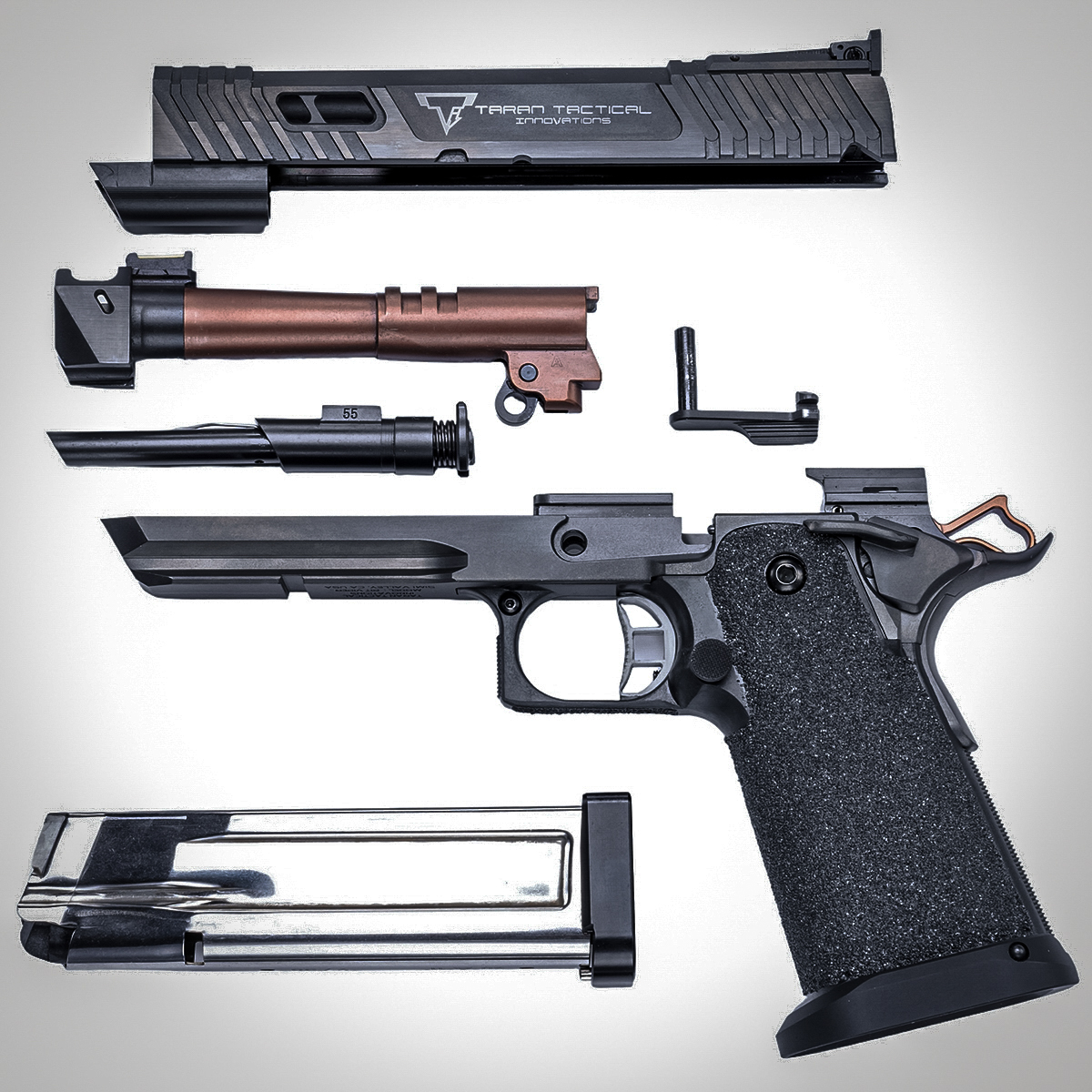
In an interview, Staccato chief executive and Marine Corps veteran Nate Horvath touched on the factors that go into that cost.
“Everything we use here at Staccato is American-made steel,” he said. “All of our components are American-made. Everything that we can make ourselves here, we are making ourselves.”
Staccato also utilizes a ton of precision machining and hand fitting, which means higher labor costs per gun.
Comparatively, other gunmakers buy or import components or use lesser-grade materials to keep prices low. While their guns are reliable, their products aren’t as refined or held to the same quality standards. In other words, the Staccato 2011’s custom treatment results in a higher price tag.
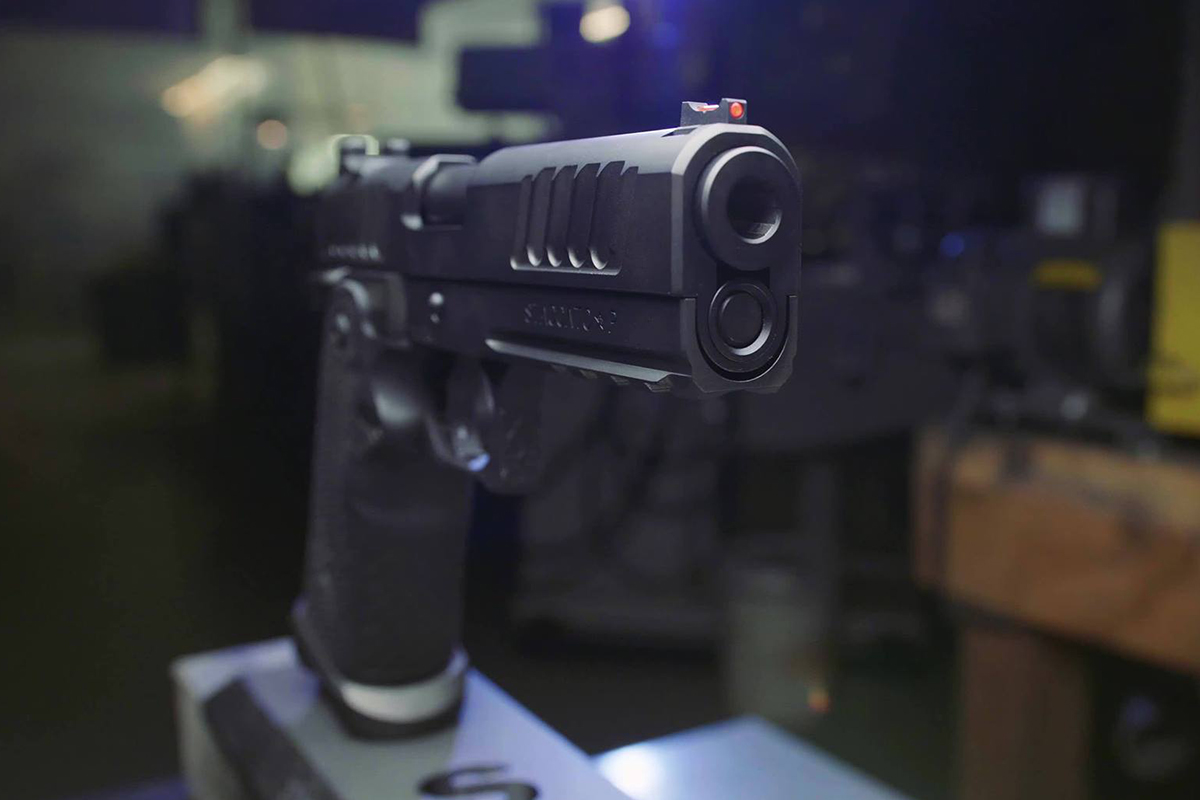
Every Staccato model has a bull barrel, which increases the pistol’s inherent accuracy by reducing vibrations and keeping lower temperatures longer than a thinner-profile barrel, but each one is also more expensive to produce.
The overall weight minimizes recoil and quickly gets the sights back on target (if the muzzle rises at all). Polished moving parts create a smoother trigger pull and cycling action, so the gun runs like a well-oiled machine rather than a crude farm implement.
It doesn’t matter how experienced you are — if you can focus on the fundamentals instead of a gritty trigger and snappy recoil, you’ll shoot better every time.
A 2011 doesn’t have to be competition-prepped, like the Staccato XC, to have better inherent accuracy than most consumer-grade pistols. A typical 2011 has more in common with a Wilson Combat 1911 or one of SIG Sauer’s Custom Works pistols than with the average 9mm pistol at your local gun store.
So You Want to Buy a 2011 Pistol…
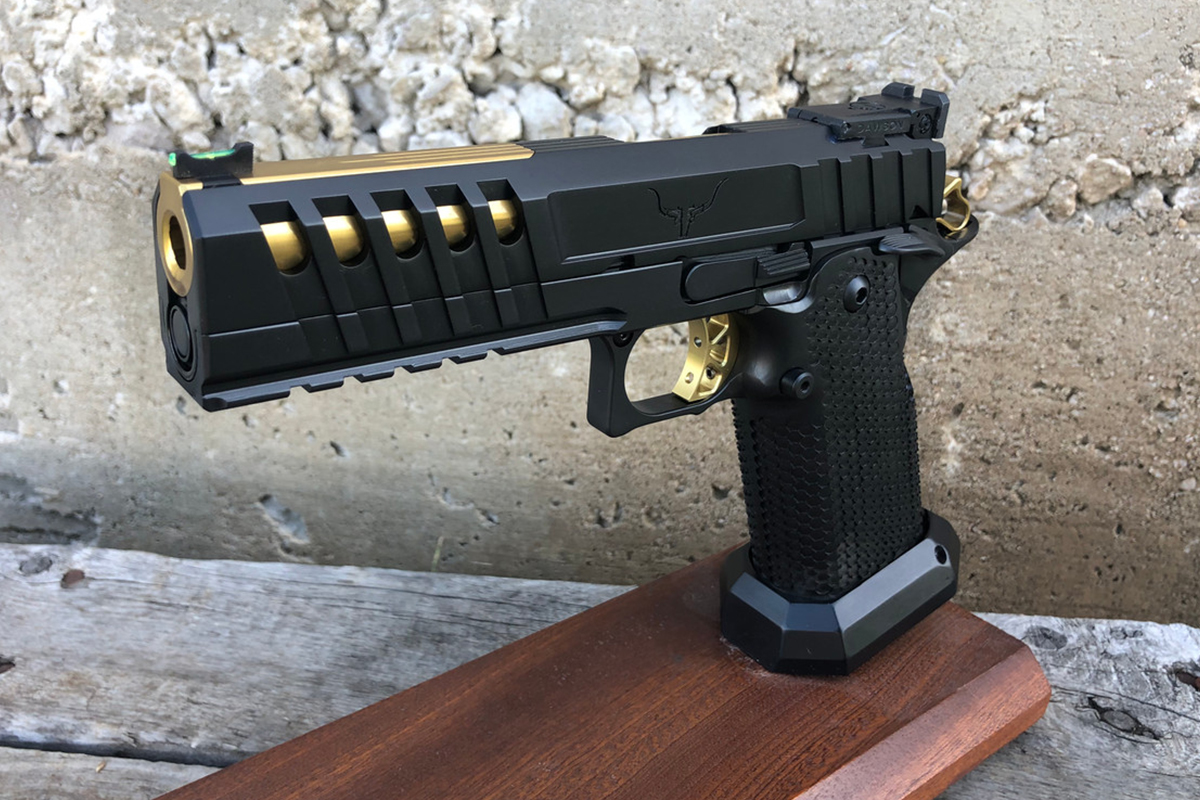
Hayes Custom Guns
How do you buy a 2011 pistol? Simple: with lots and lots of money. As prestigious as trendy Staccatos are, they’re some of the most accessible 2011s, with MSRPs ranging from $2,000 for the compact Staccato C2 to $4,300 for the decked-out Staccato XC.
Atlas Gunworks also offers a selection of top-shelf 2011 pistols for carry and competition use, with retail prices falling between $5,000 and $7,000. Shooters who like equal parts bling and bang (and have even more to spend) will want to have Hayes Custom Guns build a one-of-a-kind pistol based on the company’s Cobra 2011.
If you’re on a budget, you can get a 2011 that says it’s a 1911 in the fairly new Springfield Armory Prodigy, which has an available 26-round magazine, for an MSRP of about $1,700.
The selection of 2011 pistols is seriously limited compared to more mainstream handguns, but manufacturers cater to clients who want to customize their guns. Expect options for sights, optics, flared magazine wells, grip frames, threaded barrels, and metal finishes for what you’ll spend.
GOOD GEAR – This Indestructible Blend Delivers To Conquer Your Taste Buds
Takeaway
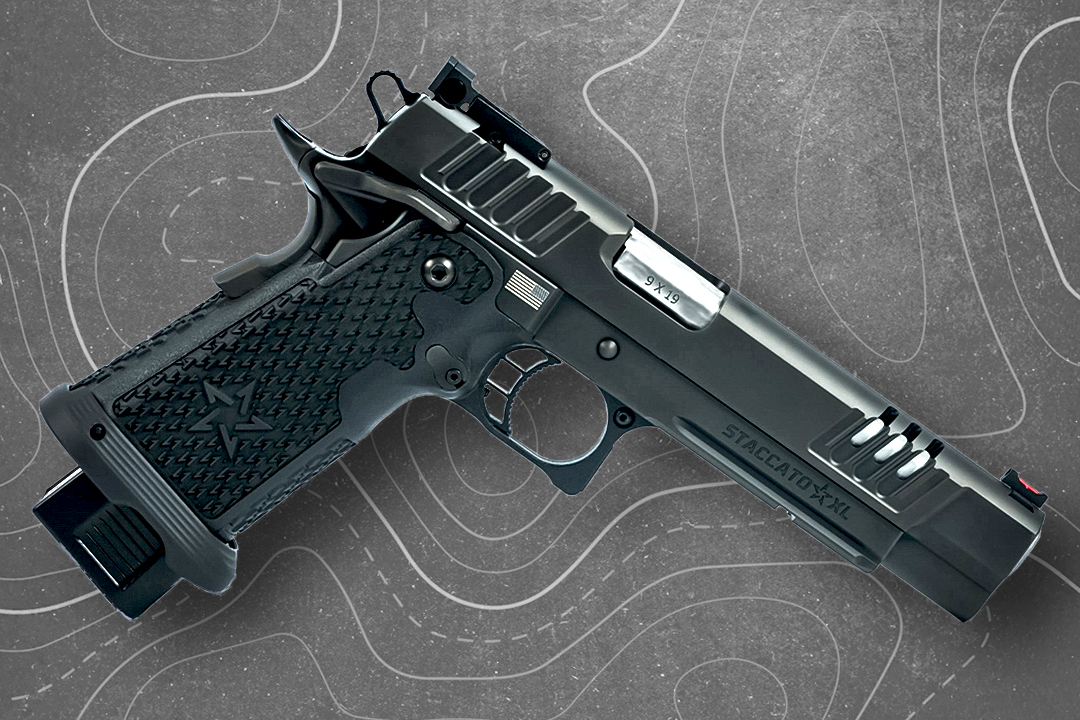
The 2011 has its roots in the 1911, but it evolved into something more. What began as a desire to increase magazine capacity and modernize an aging but beloved handgun platform became a wickedly fast, soft-shooting tack driver that can hang with dedicated competition pistols and save your bacon as a duty gun equally well.
Companies like Staccato deserve a lot of credit for taking risks and going the distance to create a riff on the original that’s so good we must admire it on its own merits.
We might see more affordable 2011 pistols someday, but now, the market belongs to premium-quality, hand-fitted guns that you almost have to shoot to appreciate.
They’re getting a ton of much-deserved attention. It turns out that a new blend of spices tastes pretty damn good, covers sound as good as the originals, and the 1911’s heir is everything we hoped for.
READ NEXT – Bushnell Rxc-200 and Rxu-200 Red Dots: 100-Round Test



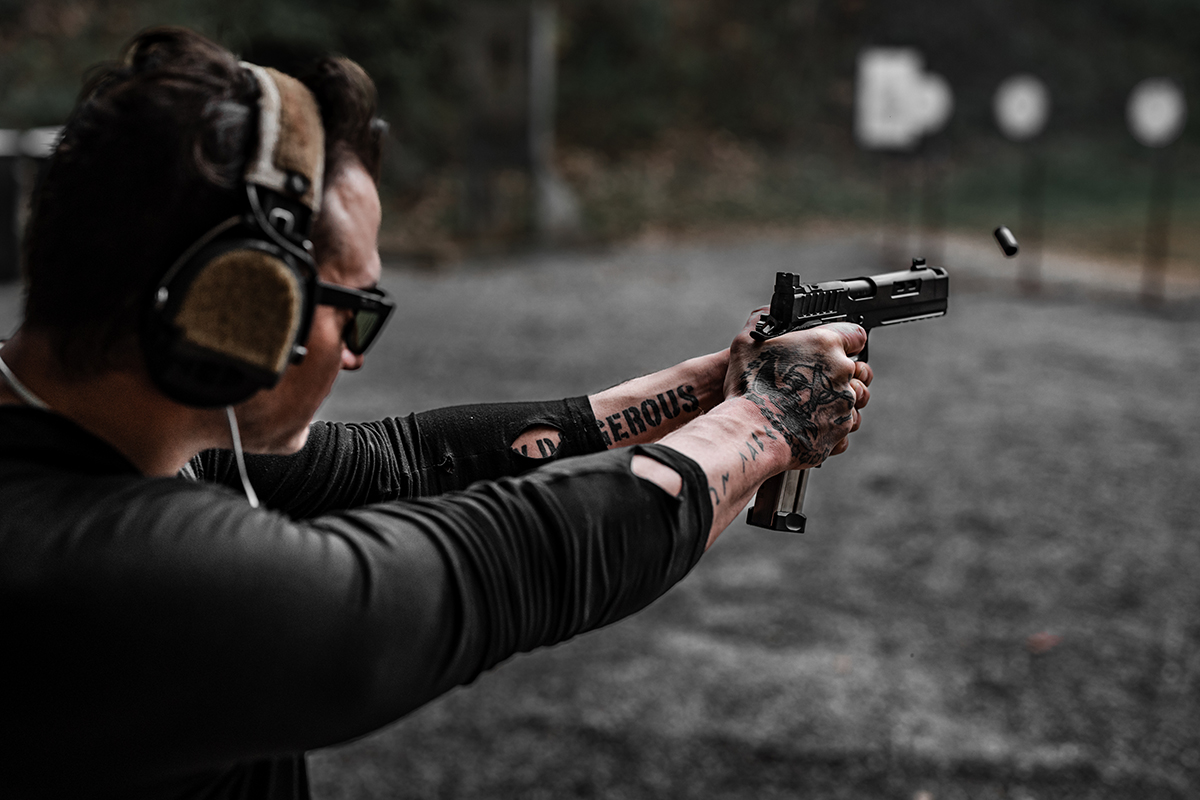

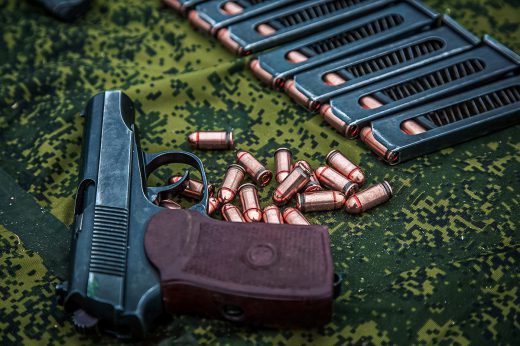
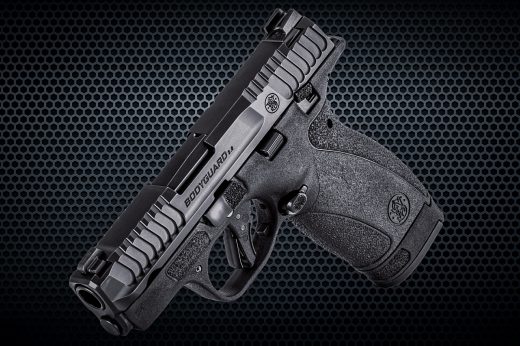
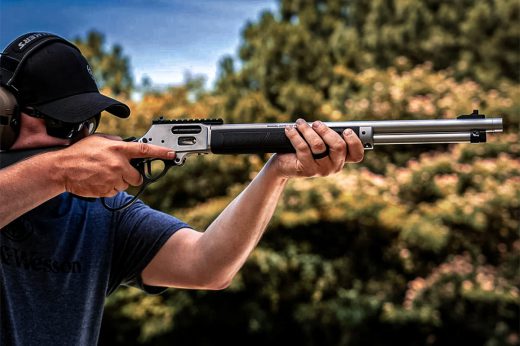


Comments